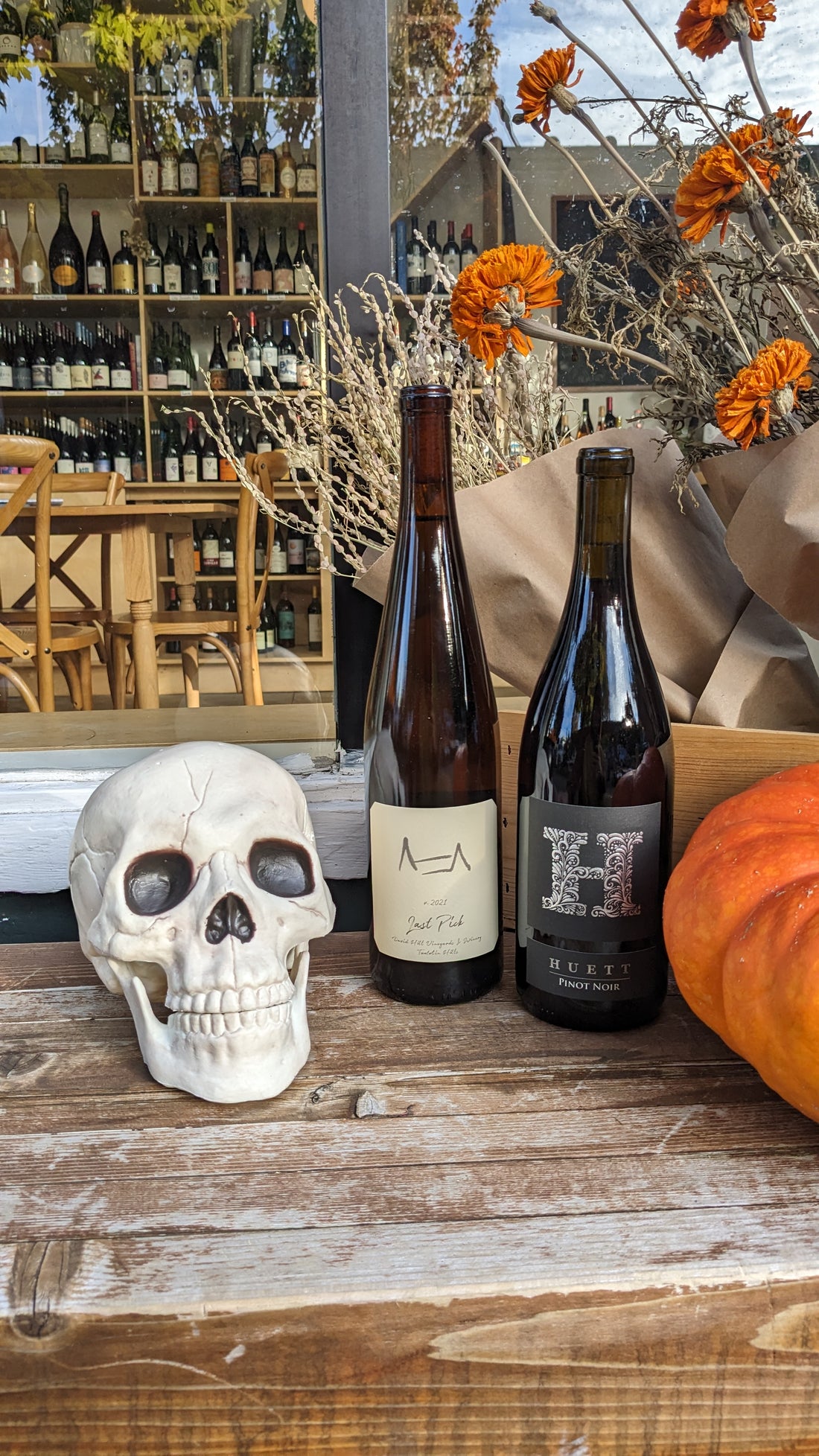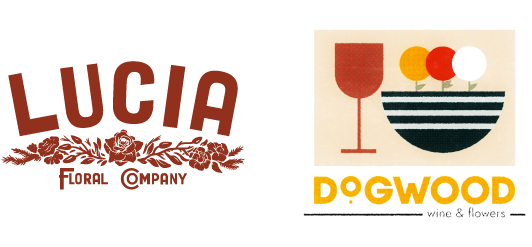
November 2023 - Willamette Valley
November 2023
Willamette Valley
Featuring:
David Hill Winery
Huett Cellars
We first talked about Oregon in Sept 2021, when we looked at the Missoula Floods that formed the landscapes of much of Eastern Washington, the Gorge, and Willamette Valley. We approached the subject again in December 2022, with a quick glimpse at the recent vintages in the Willamette and Columbia Valleys.
This month, we’re back on home turf, touching on climate and different grapes suitable for the Willamette Valley. When we first moved to Oregon, my wine-mind was formed by the warm, varied land of the Golden State to our south. I quickly jumped into the industry here, working harvest at Newberg’s ROCO Winery. Every few days, we would share a bottle of wine with lunch, often obtained via trade with another neighboring winery. These bottles were invariably always either a Pinot Noir or Chardonnay. Sometimes, we’d see a unicorn Rose of Pinot Noir (gasp!), but for the most part, it was those two grapes. (I later learned people refer to this inclination as ‘Valley palate’). Fast forward to the end of harvest and I read an Oregonian article about Sam Parra, a Latino winemaker focusing on Spanish grapes in the valley. “This is it! Someone doing something different. He must be the only one!” rang through my head. I immediately emailed Sam and, true to form, he showed up the next day with bottles to sell me. (We drank them on Thanksgiving that year).
Once we opened Dogwood, my horizons expanded infinitely and I noticed that, while they were still absolutely in the minority, there were plenty of young producers (and some of the oldest) bottling things other than Pinot Noir and Chardonnay in the region. We’ll explore one of these Producers today (the other wine is, without irony, a Pinot Noir) and do a further deep dive in the pickup party tasting. For now, let’s look at the science behind why Pinot Noir, and to a lesser extent Chardonnay, are so prevalent in Oregon.
Climate
Often, when reading or talking about Oregon’s grape growing climate, one will hear the word Burgundian used quite frequently, especially when describing our two hallmark grapes. This is a bit of a misnomer, as Burgundy’s Cote d’Or rests along the 47th parallel north (local equivalent - Olympia, WA) and the Willamette Valley is roughly centered on the 45th parallel (French equivalent - Bordeaux). The 45th parallel in France is generally considered too warm to grow Pinot Noir, while the 45th parallel in the Willamette Valley is generally too cold to ripen Cabernet Sauvignon and Merlot. Why are they both seemingly the perfect climate to grow the same grape, then?
The main difference between the two is continentality. France’s Cote d’Or lies much further inland, resulting in a more continental climate. Here, you find colder spring and fall temperatures, and bigger diurnal shifts (daily high/low temperatures) through the growing season. This results in the grapes retaining higher acidity while still developing both physical ripeness (sugar, from heat) and phenological ripeness (flavor, from sunlight). Willamette Valley, on the other hand, has a more moderate (aka Mediterranean) climate. Being only 50 miles from the cool Pacific ocean, the region's more southerly location is generally cooler than an equally continental climate in Europe (the Rhone Valley or Italy’s Piedmont). Diurnal shifts are still high here, but largely due to the cold Pacific air displacing the warm summer heat at night thanks to wind gaps in the coast range. Moreover, there are a few other differences, notably the limestone soils of Burgundy that retain and reflect heat, as well as Oregon’s vineyards having a wider variation of exposures and elevations.
The result of all this is the two different climates both being at a rough ‘upper limit’ of ripening for Pinot Noir. When you go further North in France - to Champagne or Chablis - the grape is hard to ripen to a point that regular still wine can be created. Champagne does use an ample amount of Pinot Noir, however it is harvested at a much lower Brix (ripeness) and higher acidity, giving Champagne its hallmark acidity and neutral flavor to build other aromas. When you go further North in the Pacific Northwest, it is cold enough that it's rare to even see wine grapes cultivated unless you travel to the other side of the Cascades, where the hot, dry summers of Eastern Washington allow Cabernet and pretty much any other grape to be grown.
This ‘upper limit’ of ripening means that anything requiring more warmth than Pinot Noir or Chardonnay - like Cabernet Sauvignon, Sangiovese, Zinfandel, Barbera, Tempranillo, Chenin Blanc, Nebbiolo, and many other varieties - will struggle to consistently ripen in the Willamette Valley. Grapes suited for colder climates - like Riesling, Pinot Gris, Gewürztraminer, Grüner Veltliner, Trousseau, and Melon de Bourgogne - can rather easily ripen in the Valley and will even thrive in the coldest sites. Additionally, it is not impossible to see things that like just slightly warmer climates than Pinot - like Syrah, Gamay, Nebbiolo, Chenin Blanc or Sauvignon Blanc, to name a few - ripen here, but in a cooler site or on a cold year, these may struggle to accumulate enough sugars to be made into a complete wine.
Not to ignore the 37 billion ton elephant in the room - climate change. (Yes, that number is the amount of CO2 we release into the atmosphere each year.) As the earth, and the Willamette Valley gets progressively hotter over the course of the next few decades, we will see a difference in the grapes that can grow and effectively ripen in the Willamette Valley. While I don’t think we will be competing with Napa to make the cult Cabernet anytime soon, the change has already been observed in the ripening of Chardonnay in the Willamette Valley and has affected its status as the region’s de-facto white grape over the previously lauded Pinot Gris. Furthermore, there will also be much more drastic risks associated with grape growing, such as more unpredictable frosts/freezes, heat waves, and wildfire smoke. So, while the world burns, at least we can sit back and enjoy some T-shirt weather in October and an impending string of amazing Chardonnay vintages in Oregon.
David Hill, ‘Last Pick’ Riesling, Tualatin Hills 2021
David Hill is one of Oregon’s oldest wineries. It was founded by Charles Coury in 1965 (as Charles Coury Vineyards) and built on the foundations of the Rueter family (late 1800’s). The Reuters had a homestead and produced a small amount of Klevner wine, which is an Alsatian term believed to refer to Pinot Blanc. This ‘first wave’ or Oregon wine industry was short-lived. Even though the Reuter’s won a gold Medal at the 1904 World Fair in St. Louis, their young winery was shut down during prohibition and the vineyards were replaced with fruit trees and potatoes.
Fast forward to the 1960’s, Charles Coury and other pioneers like David Lett (Eyrie Vineyard), Erath, Ponzi, and Adelsheim, turned their attention to the Willamette Valley and with Pinot cuttings from California or abroad. While the others focused largely on Pinot Noir, Charles had studied in Alsace before graduating from UC Davis, and saw the potential for Riesling, Gewürztraminer, and other Alsatian varieties, like the Reuter family who built the barn winery now lives in. As it turns out, his choice locale in the far northern reaches of the Willamette Valley - in today’s Tualatin Hills AVA - was a great location for these grapes, as it is colder, windier, and at higher elevations than much of the valley’s premier Pinot Noir and Chardonnay sites.
This Riesling bottling is part of the new-ish ‘Discovery Series’ from David Hill and has both a different label and ethos than their classic bottlings you may have seen before. These wines, crafted by winemaker Chad Stock, are an effort to explore both different grapes and new techniques that Oregonians may not be used to. We previously featured their ‘6000 bc’ - an Orange wine aged in amphorae - and have sold it in the shop since. Unlike that wine, however, this Riesling is limited to tasting room sales only, until we leveraged a large allocation for our wine club. Perks to having so many great supporters!
The ‘Last Pick’ Riesling is just that - the last fruit left on the vine after three passes of picks in the vineyard. It is the ripest Riesling they pick (23.9 brix) and this vintage there is even a small amount of botrytis (Noble Rot) in the mix, adding deeper notes of honey, beeswax, and even ginger. If this was following the German pradikat system, this would be labeled as Auslese. True to the winery, it is primarily old vines (50+ years, oldest Riesling in the valley) that are dry farmed on Laurelwood soil (basalt with loess). True to the ‘Discovery Series’, there is ample use of Acacia Barrel (50%) along with Stainless Steel. Acacia wood is known to add texture/structure, golden color, and a touch of floral aromatics without adding the vanilla or baking spice notes of Oak.
The result is an absolutely brilliant wine with deep aromatic notes of honey, jasmine, orange blossom, ginger, and nectarine. It is resoundingly dry, even with the ripeness at harvest, and has a full body, medium+ acid, and long, lingering finish. This could be enjoyed with charcuterie, go with the main course (Turkey and stuffing?) or even hang around for the Pecan Pie.

The classic David Hill Winery, with the two famous gables.
Huett, ‘Barrel Selection’ Pinot Noir, Willamette Valley 2017
Not even 10 years ago, Ryan Huett was pursuing an associate’s degree in winemaking, mowing lawns on the weekend, and had just landed a minimum-wage internship at one of Oregon’s largest wineries. He was in his 40’s, had just moved back to the US from Costa Rica, and was working on a full career transition. Within a year, his hasty internship turned into a Head Winemaker position many thanks to his hard work and previous Real Estate business acumen that helped right the ship at the winery. With the promotion to head winemaker, Ryan negotiated the right to produce his own label at said winery in exchange for lower pay. As you may guess, having an existing large-scale winery to use for a fledgling wine brand is an invaluable resource.
Ryan has since followed (and nearly mastered) the old school negociant method to create several wine brands. He runs both Raylee wines, a lower-cost, mass-market brand, as well as his namesake Huett Cellars. Ryan is able to use his favorable purchasing power at his ‘day job’ to negotiate great prices from established growers, rather than own and farm vineyards himself. This allows him to make a range of wines from Columbia Valley Cabernet, to Rocks District Syrah, to Willamette Valley Pinot Noir.
This bottling is his ‘Barrel Select’ Pinot Noir - a careful selection of multiple different sites across the valley. And while he won’t disclose the vineyard sources; we know that it’s roughly 50% Chehalem Mountain, 25% Yamhill-Carlton, and 25% Dundee Hills. The wine sees a gentle fermentation before aging for 15 months in 3-4 year old Oak barrels. As with many of our selections, minimal additions are used; in this case just sulfur dioxide.
2017 was a great vintage in a string of good years (2015 - 2019), with a cool spring but hot dry summer (sound familiar to 2023). That balance, coupled with the 5 or so years of bottle age, has softened this wine and tempered the acidity. This is an absolute treat to have such a perfectly aged wine in the wine club. On the nose, notes of dried Bing cherry, fig, brown butter, and forest floor. Bright acidity, medium body and a long finish make this a great wine to sip on its own or pair with rich buttery, roasted flavors.
